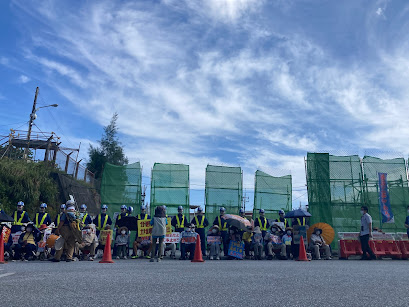A Letter to IUCN World Heritage Programme: Yambaru Forest and U.S. Military's Northern Training Area/IUCN世界遺産プログラムへの手紙:やんばるの森と北部訓練場
日本語は下にあります。
On June 18, the Okinawa Environmental Justice Project sent a letter to Mr. Tim Badman, the Director of the IUCN World Heritage Programme. The letter is posted below.
The letter asks for clarification on the Programme's stance on four critical issues regarding the U.S. military's Northern Training Area (NTA) in relation to its recommendation of the Northern Part of Okinawa Island (or the Yambaru forest) for World Heritage status. Our evaluation of IUCN World Heritage Evaluations 2020-2021 and our concerns over the Okinawa Police's house raid of entomologist Miyagi Akino prompted OEJP to send the letter to the Programme.
We hope that the Programme will respond to our request as the Programme has always done.
After reviewing the Programme's response, OEJP plans to take further action with a view to the upcoming UNESCO World Heritage Committee meeting next month.
The IUCN World Heritage Programme has been instrumental in bringing local residents’ and NGOs' concerns over the NTA into the nomination process. Here is a reminder from the "Hesitant Heritage" article of what the collaboration between the civil society and the Programme has accomplished.
The Environmental Ministry's second application (2019)
included information (albeit limited) on the NTA, a discussion on the collaboration between the Japanese and U.S. governments with the text of the "Document Concerning Cooperation with the United State Government in the Northern Training Area" (the Japan-US Joint Committee) in the Nomination Annexes (pp.5-541), and excerpts of the U.S. Marines' Integrated Natural Resources and Cultural Resources Management Plan 2014 also in the Annexes (pp. 5-489-5-540).In other words, the Ministry of the Environment (and the U.S. government) incorporated into the nomination documents responses to civil society members' demands.The inclusion of such information, especially the cooperation agreement, in the new dossier is significant. The Japanese government is extremely reluctant to disclose information relating to the U.S. bases in Japan in any form. "Agreements" made in the secretive Japan-U.S. Joint Committee rarely become public as they "will not be released without mutual agreement."
6月18日にOEJPはIUCN世界遺産プログラムの事務局長であるTim
Badman氏に手紙を送りました。手紙の和訳は下にあります。
この手紙は、沖縄本島北部(やんばるの森)の世界遺産登録勧告に関連して、隣接する米軍北部訓練場の4つの問題について、IUCN世界遺産プログラムのスタンスを明確にするよう要請するものです。IUCNの評価書IUCN World Heritage Evaluations 2020-2021に対するOEJPの見解と、沖縄県警による 昆虫研究家宮城秋乃さんへの家宅捜査の問題を受けて、手紙の送付となりました。
これまで同様、IUCN世界遺産プログラムが私たちの手紙に対応してくれることを期待します。またその対応内容が現状の問題への解決につながればと思います。ななおOEJPは、世界遺産プログラムからの対応を踏まえて、UNESCO世界遺産委員会会議を視野に入れた次の取り組みを予定しています。
IUCN世界遺産プログラムは、地域住民やNGOが提起した北部訓練場の問題に対し、世界遺産推薦の過程で対応してきました。以下は、私たち市民社会が世界遺産プログラムと共にやってきたことのリマインダーです。(引用はThe Asia-Pacific Journalに2019年8月に書いた論考”Hesitant Heritage”からです)。
環境省の二回目の推薦書は
「北部訓練場の情報(まだ限定的であるあるが)、「世界自然遺産への推薦についての米側の合意文書」、その合意文書を基にした日本政府と米国政府の協力に関する議論、米軍の「2014年自然・文化資源統合管理計画」からの抜粋を含んでいる。」
言い換えれば、環境省(そして米政府)は、市民社会が要求したことへの対応を二回目の推薦書に組み込んだといえる。
これらの情報が推薦書に含まれたこと、とくに協力に関する合意文書が含まれたことは重要だ。日本政府は在日米軍に関わる情報や文書を公にすることを極度に避けたがっている。特に、日米合同委員会で交わされる合意文書は「双方の合意がなければ公開されない」ことになっており、公になることはあまりない。」



